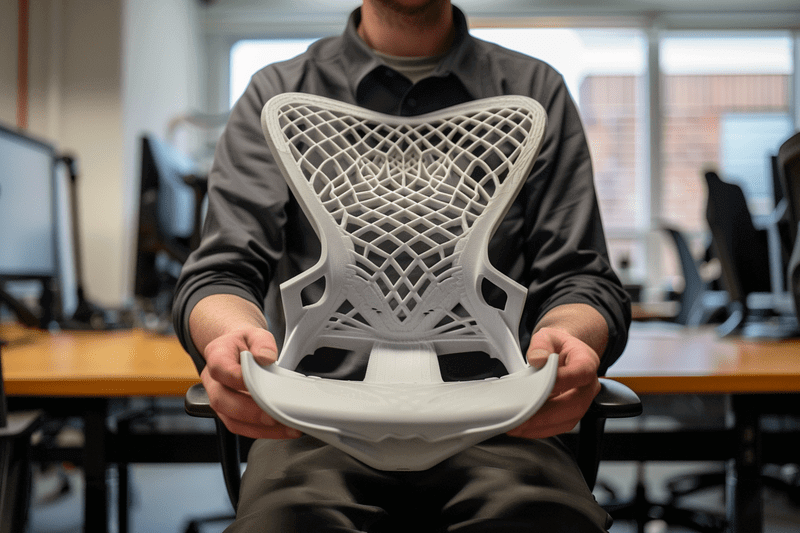Choosing between a prototype and a minimum viable product (MVP) can make or break your product development strategy. While both serve critical roles in bringing ideas to life, understanding when and how to use each approach determines whether you’ll waste resources on the wrong path or accelerate your journey to market success.
The confusion between prototype vs MVP stems from their overlapping purposes in validating product concepts. However, their distinct objectives, development processes, and market applications require different strategies and resources. Recent industry data shows that 85% of product managers consider prototyping and MVPs essential for testing ideas, yet strategic clarity around when to use each approach remains a challenge.Ready to bring your product vision to life? Discover how Gembah can help you streamline your development process, from prototyping to launching your MVP. Let’s build something great together!
TL;DR
Prototypes and MVPs serve different but complementary roles in product development. A prototype helps teams explore and validate design concepts quickly, while an MVP is a stripped-down version of the product used to test real market demand. The right choice depends on your product stage and goals: use prototypes for early feedback and UX refinement; use MVPs to validate your business model with real users. Gembah’s integrated platform supports both paths with expert teams and scalable production strategies.
Key Takeaways
- Prototypes are used early to test ideas, visualize concepts, and refine user experience—ideal for internal validation.
- MVPs are functional products built for market testing, user feedback, and business validation—designed to attract real users.
- Prototypes are faster and cheaper to create; MVPs take more time and resources but provide real-world validation.
- Use prototypes to test usability and get stakeholder buy-in; use MVPs to test market demand and business viability.
- Gembah offers end-to-end support for both prototypes and MVPs, helping startups go from concept to launch efficiently.
Also Read:

Quick Decision Guide: Prototype or MVP?
Ask yourself these key questions to identify your best path forward:
Choose a Prototype if:
- You’re exploring multiple design concepts and need stakeholder buy-in
- Your product involves complex workflows that require visualization
- You need to test technical feasibility before committing to development
- Your primary goal is refining user experience and interface design
Choose an MVP if:
- You’re ready to test market demand with real users
- You need to validate your business model and pricing strategy
- You want to attract early customers or secure investor funding
- Your concept has clear market direction and you need user behavior data
Prototype vs MVP: Core Definitions
What is a Prototype?
A prototype serves as an early representation of your product idea, designed to visualize concepts and test user experiences before committing to full development. Think of it as a tangible way to communicate your vision to stakeholders, development teams, and potential users without the complexity of a market-ready solution.
These early models help bridge the gap between abstract ideas and concrete solutions. Prototypes vary dramatically in their complexity and fidelity, from simple sketches and wireframes to interactive digital models that simulate user flows. 58% of product managers now use no-code platforms to build prototypes more quickly, reflecting the industry’s shift toward accelerated validation methods.
Product management experts emphasize a crucial distinction: “Unlike prototypes which focus on idea testing, MVPs are specifically designed for market approval – they help determine if your product addresses a genuine market need rather than just testing functionality.”
What is a Minimum Viable Product (MVP)
An MVP represents a functional, market-ready version of your product that includes only the essential features needed to address your target users’ primary needs. Unlike prototypes, MVPs are built for real-world deployment, designed to attract early adopters and generate actionable market feedback.
The strategic value of MVPs becomes clear in the success metrics. Companies that implement MVPs have a 60% higher success rate compared to those launching with fully-featured products. Even more compelling, 74% of tech unicorns started with an MVP, highlighting its outsized impact on long-term growth and value creation.
MVPs must meet basic standards for usability, reliability, and performance that end users expect. They can generate revenue, attract early customers, and provide concrete evidence of market demand. This market-facing nature distinguishes MVPs from prototypes, which remain primarily internal validation tools.

Key Differences Between Prototype and MVP
Purpose and Strategic Application
The fundamental difference lies in what you’re trying to validate. Prototypes excel at exploring design concepts and validating user interface decisions before development begins. They help teams identify and address design uncertainties, technical challenges, and usability issues when changes cost the least.
MVPs serve a different purpose entirely: validating business assumptions and product value propositions in real market conditions. As industry experts note, “The key difference to remember is that an MVP is focused on market viability while earlier validation stages like PoCs test technical feasibility.”
This distinction has real business implications. According to CB Insights, 42% of startups fail because they build products nobody wants—an MVP allows for early validation to avoid this major pitfall.
Development Process and Timeline
Prototyping thrives on rapid iteration cycles that emphasize speed and flexibility over completeness. Teams can explore multiple design directions simultaneously, testing different approaches to user experience without the constraints of full development. Current industry practice shows prototypes can typically be delivered in 1-2 weeks, focusing primarily on design decisions.
MVP development follows lean methodology principles requiring full development cycles including sprint planning, QA testing, and deployment. McKinsey reports that using an MVP approach cuts time-to-market by 30% compared to traditional development paths, but MVPs still require 1-2 months or more with full-stack development.
Cost and Resource Investment
The investment requirements differ dramatically between approaches. Prototypes typically cost between $5,000–$15,000 for basic versions, with more extensive prototypes reaching $15,000–$25,000 when including research and multiple iterations.
MVPs demand significantly more investment. Building an MVP typically costs just 10-30% of what it would take to launch a full-scale product, with average MVP development costs ranging from $15,000 to $50,000 depending on complexity and team rates.
Despite higher upfront costs, MVPs provide measurable ROI advantages. Y Combinator data shows that startups with MVPs and early traction are four times more likely to receive funding than those without real-world validation.
Decision-Making Framework: SWOT and SPADE Analysis
SWOT Analysis for Product Development Choices
When evaluating prototype vs MVP approaches, systematic analysis prevents costly missteps. The SWOT framework helps examine internal capabilities alongside external market conditions.
Strengths Assessment: Evaluate your team’s design capabilities for prototyping versus development resources for MVP creation. Consider existing technical infrastructure, budget constraints, and timeline flexibility.
Weaknesses Identification: Acknowledge gaps in market knowledge, technical skills, or stakeholder alignment that might influence your choice. Teams lacking development resources might benefit from prototyping first, while those uncertain about market demand should prioritize MVP validation.
Opportunities Analysis: Market timing, competitive gaps, and investor interest can favor one approach over another. Emerging markets often reward MVP-first strategies, while established markets might require more design validation through prototyping.
Threats Consideration: Competitive pressure, resource limitations, and stakeholder expectations create constraints that influence feasibility of each approach.
SPADE Framework Implementation
The SPADE framework provides structured decision-making for complex product choices by establishing context, proposing alternatives, analyzing options systematically, deciding transparently, and explaining rationale clearly.
Setting Context: Define your current product stage, market understanding, and validation objectives clearly. Teams in early ideation phases typically benefit from prototyping, while those with validated concepts should consider MVP development.
Proposing Alternatives: Consider hybrid approaches like high-fidelity prototypes that simulate market conditions or lean MVPs that incorporate extensive prototype testing phases.
Analysis Phase: Weigh resource requirements, timeline constraints, and strategic objectives against expected outcomes. Factor in stakeholder expectations and market conditions that influence success probability.
Decision and Explanation: Document your reasoning and communicate trade-offs clearly to align team expectations and secure stakeholder support.

When to Use Each Approach
Prototype-First Scenarios
Prototyping works best during initial stages when teams need to explore multiple concepts before committing resources. This approach supports creative brainstorming and rapid iteration when product requirements remain fluid and stakeholder alignment is crucial.
Consider prototyping when your product involves complex workflows, novel interaction patterns, or when demonstrating concepts to investors becomes necessary. The controlled testing environment allows teams to gather detailed insights about user preferences and interface effectiveness without market deployment complexity.
Industry experts emphasize that “prototypes focus on user experience and design, helping you identify issues early, while MVPs require full development cycles.” This distinction proves especially valuable for products where user experience significantly impacts adoption rates.
MVP-Preferred Conditions
MVPs excel when teams are ready to test market demand with real users and validate fundamental business assumptions. They provide authentic market testing while limiting resource exposure, enabling quick adaptation based on user response and competitive dynamics.
The market validation possible with MVPs helps teams understand the complete customer journey from awareness to purchase to ongoing usage. This comprehensive view of user behavior informs strategic decisions about scaling, feature prioritization, and business model optimization.
Current data supports this approach: MVPs enable companies to begin earning revenue much sooner, with typical timelines of 3-4 months to market versus 9+ months for full products.
Risk Assessment and Mitigation
Understanding failure patterns helps inform better decisions. Research shows that only one out of ten startups advances beyond the MVP stage, while just one in a hundred achieves significant success. This data underscores the need for rigorous market research and execution even in MVP-driven strategies.
Successful teams establish clear mechanisms for capturing insights from both internal reviews and external user testing. 41% of companies now use data analytics and AI specifically for product development, demonstrating the growing sophistication of feedback integration systems.
The most effective approach recognizes that “the most successful product teams are using prototypes for quick usability testing and MVPs for genuine market validation. The distinction isn’t academic—it directly impacts development costs and time-to-market.”

Learn How to Prototype a Product
In 3 Easy to Follow Steps.
Gembah: Your Partner in Prototypes and MVPs
Gembah transforms the traditional approach to prototype and MVP development through its comprehensive platform that connects clients with a vetted network of over 250 product designers, engineers, and manufacturing specialists. This end-to-end product development service eliminates common handoff risks while accelerating time-to-market for both prototyping and MVP initiatives.
The platform’s strength lies in its integrated methodology that emphasizes iterative feedback and structured testing through defined Alpha and Beta phases. Alpha prototypes focus on functionality validation using cost-effective materials, while Beta prototypes refine appearance and deeper market validation. This systematic approach helps clients like LapLok optimize design for efficient production while creating pre-production prototypes with final materials for authentic validation.
Gembah’s design-for-manufacturability integration sets it apart in the prototype vs MVP decision-making process. By incorporating DFM principles from project inception, their expert network ensures prototypes transition smoothly to production, whether you’re building initial prototypes or market-ready MVPs. This approach proved successful for Ma Fête, where Gembah managed the complete journey from concept to manufacturable prototype.
The platform leverages advanced technologies including 3D printing, CNC machining, and electronic prototyping to create functional, testable prototypes quickly. For teams deciding between prototype and MVP approaches, Gembah’s comprehensive testing and validation services provide the technical depth needed for confident market entry, supported by their ongoing production management and process improvement expertise.
Whether you’re exploring initial concepts through prototyping or validating market demand with an MVP, Gembah’s integrated platform and expert network provide the specialized support needed to navigate complex product development decisions successfully. Their transparent, feedback-driven process reduces early-stage development risks while accelerating the path from idea to market-ready solution.



